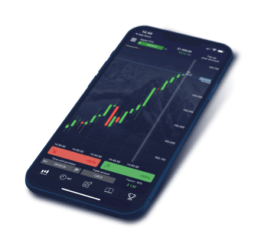Pocket Option Fees: A Comprehensive Guide
Understanding the fees associated with trading platforms is crucial for any trader looking to maximize their profitability. Pocket Option, a popular choice among traders for its user-friendly interface and variety of trading options, also comes with its own set of fees. In this article, we will delve into the details of Pocket Option Fees, aiming to provide clarity and assist traders in making informed decisions.
What Are Pocket Option Fees?
Pocket Option Fees are the charges imposed by the platform for using its services. These fees can vary based on the type of trade, the payment method, and other factors specific to the trading activities. Understanding these fees is crucial for traders to accurately calculate their potential returns and manage their accounts efficiently.
Types of Fees on Pocket Option
The fees on Pocket Option can be broadly categorized into several types, each impacting the trader’s bottom line differently. Below, we explore these fees in detail:
1. Trading Fees
Trading fees are the costs incurred when executing trades on the platform. The main component under trading fees is the spread, which is the difference between the buy (ask) and sell (bid) prices of an asset. Pocket Option does not charge set trading commissions, making the spread the primary cost for traders.
2. Deposit and Withdrawal Fees
While Pocket Option offers various payment methods for deposits and withdrawals, fees can apply depending on the payment processor used. Bank transfers, e-wallets, and cryptocurrencies may each have different fee structures associated with them.
3. Inactivity Fees
If a user’s account remains inactive for an extended period, Pocket Option might impose inactivity fees. These fees incentivize traders to remain active on the platform and keep their accounts engaged. The criteria and rates for inactivity fees should be carefully reviewed in the platform’s terms and conditions.
4. Currency Conversion Fees

If trades involve currency conversion, where the trading currency differs from the account currency, currency conversion fees may apply. These fees are particularly relevant for traders who engage in international transactions or trade with assets priced in different currencies.
Minimizing Pocket Option Fees
While fees are an inevitable aspect of trading, there are strategies to minimize their impact:
1. Selecting Suitable Payment Methods
Opt for payment methods with lower fee structures. For instance, cryptocurrency transactions often incur lower fees compared to traditional bank transfers. Evaluate the available options and choose one that balances convenience and cost efficiency.
2. Stay Active
Avoiding inactivity fees is straightforward—regularly engage with the platform, even if it’s through minimal trading activity, to keep your account active.
3. Optimize Trading Times
Understanding the trading schedule and market hours can help optimize your trades and minimize fees associated with fluctuating spreads. Trading during high-liquidity times often reduces the spread costs.
4. Currency Management
To avoid conversion fees, maintain your account balance in a currency that matches the assets you frequently trade. This reduces the need for currency conversion and the associated costs.
Conclusion
Pocket Option Fees, like those on any trading platform, are a critical consideration that can significantly affect your trading outcomes. By understanding the various fees and implementing strategies to minimize them, traders can enjoy a more profitable and seamless trading experience. As with any financial decision, carefully review and consider the fee structures of Pocket Option before engaging in trading activities.
We hope this comprehensive guide helps you navigate and understand Pocket Option Fees, enabling you to make informed and strategic trading decisions.

Leave a Reply